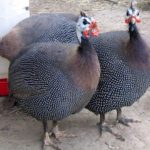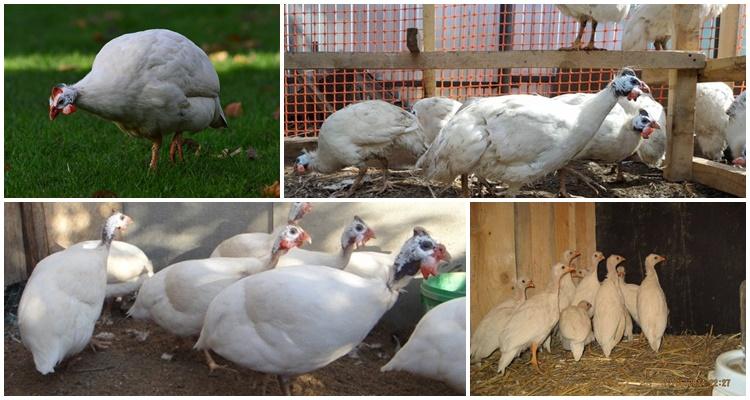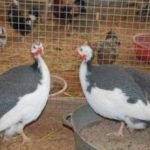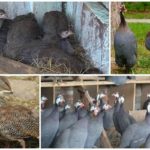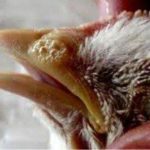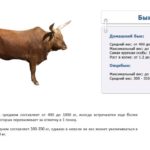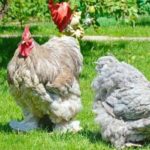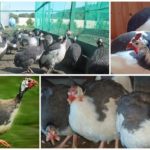Guinea fowl are one of the types of poultry that are bred for meat. Those involved in meat poultry farming are interested in knowing how much a guinea fowl weighs, because it determines whether it will be profitable to keep. And also what factors influence the growth and development of a bird, and, accordingly, its weight. How to properly weigh guinea fowl at home.
Guinea fowl average weight table
If the livestock is raised in good conditions and on properly selected feed, then, on average, by the age of 3 months the birds gain 1.2 kg. Males can be slaughtered at the age of 3-4 months.Guinea fowl, just like chickens, have broiler breeds that grow faster than usual and are ready for slaughter after 2.5-3 months of fattening. By this time they weigh up to 3 kg.
Growth also depends on the breed. In the grey-speckled variety, adults weigh 1.5-1.8 kg, in the broiler variety - 2-2.5 kg. They reach this mass by 8-10 months of life. The young weigh 0.9 kg at six months. Zagorsk white-breasted, relatives of the gray-speckled ones, reach a larger weight - 1.8-2 kg. By the age of 10 months, they gain 1.5-1.7 kg. Volga guinea fowl gain 2 kg, Siberian whites - 1.8 kg.
You can remember a lot of popular breeds by looking at the table.
| Breed | Young animals | Adults |
| Grey-mottled | 0,9 | 1.5-1,8 |
| Broiler | 1,5 | 2-2,5 |
| Zagorsk white-breasted | 1-1,2 | 1,8-2 |
| Volga | 1.2 | 2 |
| Siberian | 1 | 1,8 |
Factors affecting weight
A certain mass is fixed in the characteristics of the breed and is determined genetically. Birds achieve this with proper care and feeding. But if the conditions of detention are not met, the individuals do not receive proper care, or the food does not meet the requirements, the weight of the guinea fowl will be less.
You also need to take into account that, depending on age, guinea fowl grow unevenly. Intensive growth of broilers continues for up to 5 months, then the growth rate decreases. It follows from this that fattening for meat is profitable only up to this age.
It is advisable to feed for a long time only if you plan to receive eggs. Egg-laying varieties lay a lot of eggs, so the hens can be left for 1-2 seasons, then replaced with a new batch of young females from the current year.But we must take into account that the females of the egg varieties themselves have less mass than the meat varieties.
How to weigh a bird
To track weight, you need to purchase electronic scales on which to weigh the bird. If the population is small, then you can weigh all individuals in turn. The weight of broilers should be determined every month, starting from the day they hatch from the egg. To know which bird weighs how much, you need to put rings with a number on the paws of the young birds. Record all readings in a notebook. Approximate weight growth of chicks:
- on the first day – 20-30 g;
- 1 month – 230 g;
- 60 days – 0.7 kg;
- 3 months – 1.3 kg;
- 120 days – 1.6 kg.
If the livestock is large, then weighing is carried out selectively: several specimens are weighed and the average weight is obtained. But these readings do not reflect the real state of affairs, because the mass of individual birds, of course, is not the same and may differ markedly.
The weight that a domestic guinea fowl can achieve depends on the breed, conditions of keeping and care, feeding, and quality of food.
If the cultivation rules are followed, breeding will be profitable from an economic point of view. To quickly obtain meat, you need to choose a broiler or meat variety; to obtain eggs, you need to choose an egg variety. Do not forget that weight also depends on age, and that it is most profitable to fatten birds up to a certain age.

